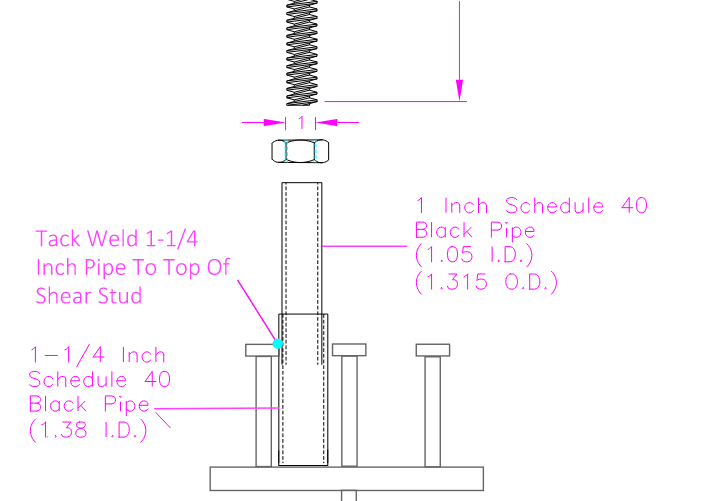MIKE_311
Structural
- Feb 15, 2020
- 108
I have a contractor that want to set the screen rail on top of a girder. They want to use a pipe receiver set on the beam and tack welded to the shear studs since they aren't allowed to weld to the flange. The receiver would have a smaller pipe and adjustable threaded rod that would be pulled after the screed passes, leaving the receiver in place
Concrete finishing aside, any issues with type of support or tack welding to studs? I can't seem to find anything in the agency specs or others that forbids this.
I've never seen this before so i'm not sure what other alternatives exist. I know its done, many agency specs discuss using over girders and provide clearance over top of chairs, etc, but they are all surprisingly light on attachment requirements or restrictions (besides welding to the flange) to steel girders.
If this is a normal method of attached, what does the contractor need to demonstrate, if anything, via calculations, for this method of attachment?
Concrete finishing aside, any issues with type of support or tack welding to studs? I can't seem to find anything in the agency specs or others that forbids this.
I've never seen this before so i'm not sure what other alternatives exist. I know its done, many agency specs discuss using over girders and provide clearance over top of chairs, etc, but they are all surprisingly light on attachment requirements or restrictions (besides welding to the flange) to steel girders.
If this is a normal method of attached, what does the contractor need to demonstrate, if anything, via calculations, for this method of attachment?

